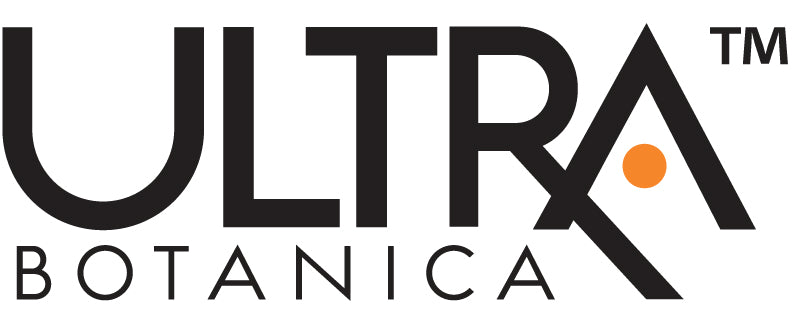Summer's in full swing, and you know what that means: sunshine, beach days, and… sunscreen.
We all know we should apply sunscreen to protect our skin, but have you ever stopped to think about what's actually in those bottles? Sunscreen ingredient safety has become a hot topic lately, and for good reason.
What we put on our bodies is just as important as what we put in them. This isn't about ditching sun protection; it's about making informed choices about the products we use.
Let's learn more about sunscreen ingredient safety. ☀️
Unmasking the Chemicals in Your Sunscreen
For years, many of us have slapped on sunscreen without a second thought, trusting it's doing its job. However, many sunscreens on the market contain harmful ingredients that can be absorbed through the skin and enter the bloodstream even after a single day of use.
In fact, one study found that chemical UV filters were present in blood samples at significant levels. Other studies have reported sunscreen ingredients were detected in breast milk, urine samples, and the placenta.
Because they are lipophilic, meaning they accumulate in fat tissue, they can also easily pass through the blood-brain barrier.
Some experts say that more research is needed to determine the potential risks of these chemicals, as the studies to date only show that they are bioavailable under normal usage conditions.
What are Chemical UV Filters?
Traditional sunscreen skin care products often rely on chemical filters to absorb UV rays. These common chemical ingredients include oxybenzone, octinoxate, and avobenzone — names you've probably seen on ingredient lists.
While effective at blocking UV radiation, research suggests that these chemicals may have unintended consequences for our health.

The Problem with Chemical Sunscreen Ingredients
Studies report that these chemical-based sunscreens can disrupt hormones. This poses a potential concern for reproductive systems and thyroid function.
Some studies even point to a possible link between common sunscreen ingredients and an increased risk of certain cancers.
Sunscreen ingredient safety goes beyond just the immediate effects.It's about understanding the long-term implications of what we put on our skin. After all, skin is your largest organ and is known to absorb nearly everything you put on it. So be mindful of what that includes.
The Rise of Mineral Sunscreens and Why You Should Care
Before you swear off sunscreen altogether, there is some good news. A safe sunscreen alternative is gaining popularity: mineral-based sunscreens.
These sunscreens utilize mineral ingredients like zinc oxide and titanium dioxide to create a physical barrier that blocks UV exposure.These minerals sit on top of your skin, reflecting the sun's rays away, rather than absorbing into your body.
Why Choose Mineral Sunscreen?
Think of it like this: chemical sunscreens are like a sponge, absorbing UV rays. Mineral sunscreens are like a shield, deflecting UV rays before they reach your skin.
Mineral sunscreens offer effective protection against UVA and UVB rays without the potential hormone-disrupting effects of chemical filters.
The benefits extend beyond just us: mineral sunscreens are considered safer for the environment, especially coral reefs. Switching to mineral sunscreen is a win for both our bodies and the planet.

The Trouble with SPFs
Although most people instinctively look for an SPF with the highest possible numeric value, it may be time to rethink that practice. A high SPF doesn't necessarily protect you from ultraviolet harm better than a lower SPF.
An Unreliable Measure
SPF values only protect against UVB rays, whereas a reliable sunscreen protects against both UVB and UVA. This is because protection against sunburn was the original idea behind sunscreens.
However, it's now known that some UV rays don't even cause sunburn, yet they can lead to other harms.
For instance, UVA rays penetrate more deeply into the skin and are linked to photo-aging and skin cancer. Using a broad spectrum sunscreen would be better for protecting skin against UVB and UVA rays.
An Imprecise Measure
What's more, the test methods used to determine the SPF can have varying results. In lab studies they expose people to UV light and watch for how long it takes to achieve the slightest skin redness.
Problem is, people's skin varies, and labs aren't the same as real-world, outside conditions.
Plus, what exactly defines "slightest skin redness"?
Environmental Working Group (ewg.org) has tested sunscreen products for the past two decades. Their data doesn't exactly instill confidence in the products and industry. Just 18 of 51 products passed the standard for UVA protection tests for products sold in Europe.
And in U.S. products, the UVA sun protection came in at 42% to 59% of the SPF for UVB rays.
The FDA's own tests showed great disparity between protection against UVB compared to UBA rays.

The Problems with High SPF Products
People place too much trust in the value of high SPF products. Here are the problems with that...
- Poor balance between UVB and UVA protection. The sunscreen SPF rating is focused on sunburn protection from UVB rays. It may do little or nothing to protect from UVA rays.
- Leads to a false sense of security. Consumers tend to stay in the sun longer than they should just because the number is high. Ample evidence in multiple studies show that people stay in the sun much longer than they should based on a higher SPF number, overexposing themselves to both UVA and UVB rays. What's more, when dermatologists asked about SPF and water-resistance of sunscreens, consumers got the answers wrong 70% of the time, and right only 30% of the time.
- Sunburn protection is only marginally better with a high SPF. Most people assume they'd get twice the protection from a 100 SPF than a 50 SPF. Properly applied sunscreen with SPF of 30 to 50 should provide even the most fairly complected folks plenty of protection.
- High SPF products have more health side effects because they contain higher concentrations of sun-filtering chemicals than lower SPF ones do. If studies showed they produced greater protection, they might be worth it. But they don't.
The FDA has long maintained that any SPF over 50 is "inherently misleading." Given that, don't fall for the higher SPF trap.

What to Look for When Choosing Sunscreen
Ready to make the switch? Opt for broad spectrum protection with an SPF of 30 to 50. When checking ingredient lists, keep an eye out for "non-nano" zinc oxide and titanium dioxide, meaning the particles are large enough that they won’t be absorbed through skin contact.
Environmental Working Group has a rating of sunscreens based on minimizing the toxic chemicals contained in each. Use it as your buying guide and enjoy a safe, rest of your summer.
Ways to Protect Your Skin Without Sunscreen
Wear protective clothing such as long-sleeved shirts, pants, and wide-brimmed hats, and opt for clothes made from tightly woven fabric for better protection.
Seek shade whenever possible, especially between 10 a.m. and 4 p.m. when the sun's rays are strongest. Consider carrying an umbrella for portable shade. A wide-brimmed hat can shield your face, neck, and ears from direct sunlight.
Try to schedule outdoor activities for the early morning or late afternoon to avoid peak hours of intense sunlight, and be cautious around reflective surfaces like water, sand, and snow, as they can intensify UV radiation
Conclusion
Sunscreen ingredient safety is no small matter. The choices we make about our personal care can have lasting impacts on our well-being and the environment.
By understanding the potential risks of chemical sunscreen ingredients, we empower ourselves to make conscious choices for ourselves and the planet.
Opting for mineral sunscreens with zinc oxide or titanium dioxide as active ingredients can help ensure that our fun in the sun doesn't come at the cost of our health.





Share:
Boost Health with Broccoli Sprouts: Nature's Detoxifier
Early Onset Cognitive Decline: Signs, Impacts, and Hope